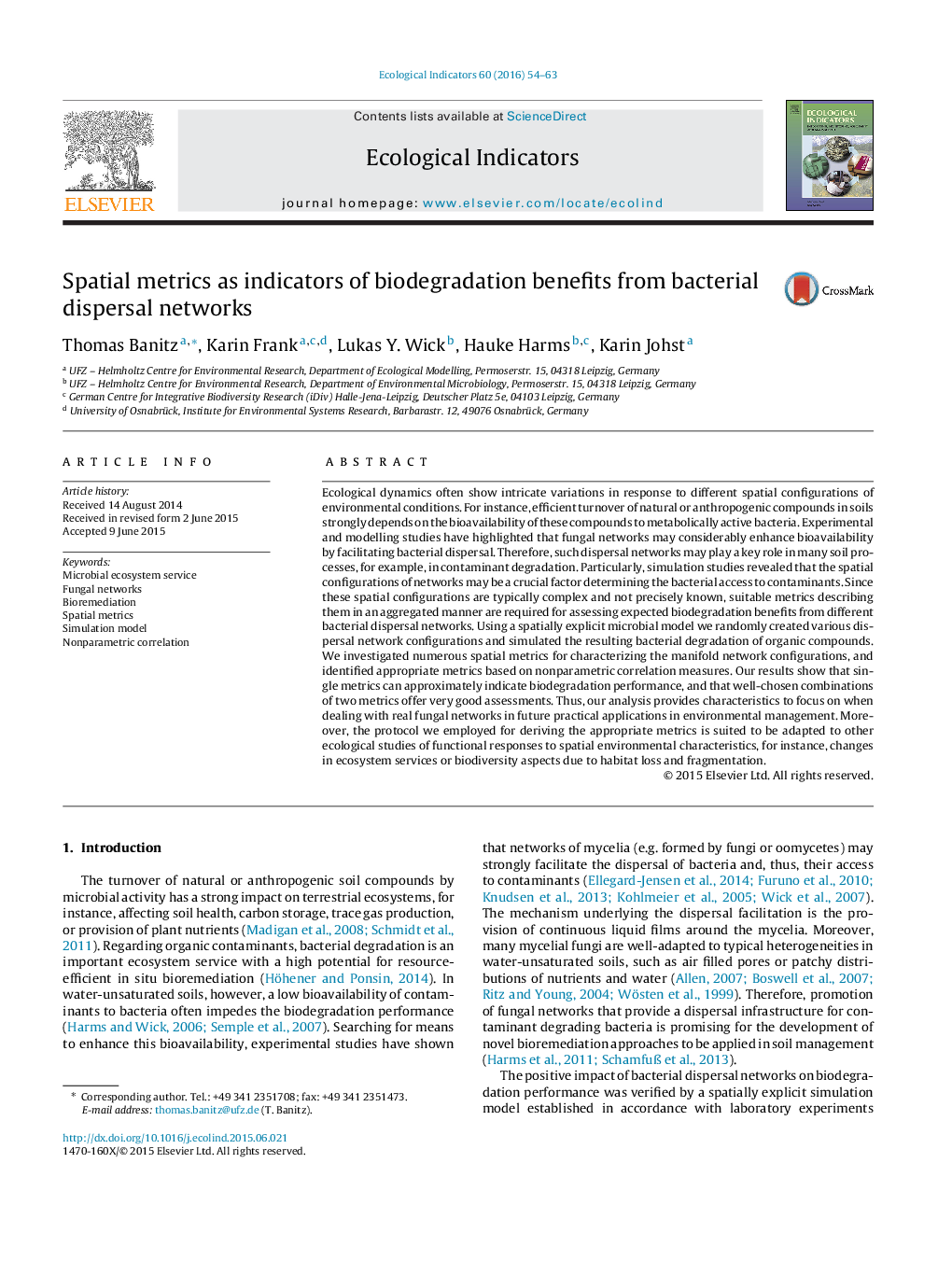| Article ID | Journal | Published Year | Pages | File Type |
|---|---|---|---|---|
| 6293992 | Ecological Indicators | 2016 | 10 Pages |
Abstract
Ecological dynamics often show intricate variations in response to different spatial configurations of environmental conditions. For instance, efficient turnover of natural or anthropogenic compounds in soils strongly depends on the bioavailability of these compounds to metabolically active bacteria. Experimental and modelling studies have highlighted that fungal networks may considerably enhance bioavailability by facilitating bacterial dispersal. Therefore, such dispersal networks may play a key role in many soil processes, for example, in contaminant degradation. Particularly, simulation studies revealed that the spatial configurations of networks may be a crucial factor determining the bacterial access to contaminants. Since these spatial configurations are typically complex and not precisely known, suitable metrics describing them in an aggregated manner are required for assessing expected biodegradation benefits from different bacterial dispersal networks. Using a spatially explicit microbial model we randomly created various dispersal network configurations and simulated the resulting bacterial degradation of organic compounds. We investigated numerous spatial metrics for characterizing the manifold network configurations, and identified appropriate metrics based on nonparametric correlation measures. Our results show that single metrics can approximately indicate biodegradation performance, and that well-chosen combinations of two metrics offer very good assessments. Thus, our analysis provides characteristics to focus on when dealing with real fungal networks in future practical applications in environmental management. Moreover, the protocol we employed for deriving the appropriate metrics is suited to be adapted to other ecological studies of functional responses to spatial environmental characteristics, for instance, changes in ecosystem services or biodiversity aspects due to habitat loss and fragmentation.
Related Topics
Life Sciences
Agricultural and Biological Sciences
Ecology, Evolution, Behavior and Systematics
Authors
Thomas Banitz, Karin Frank, Lukas Y. Wick, Hauke Harms, Karin Johst,
